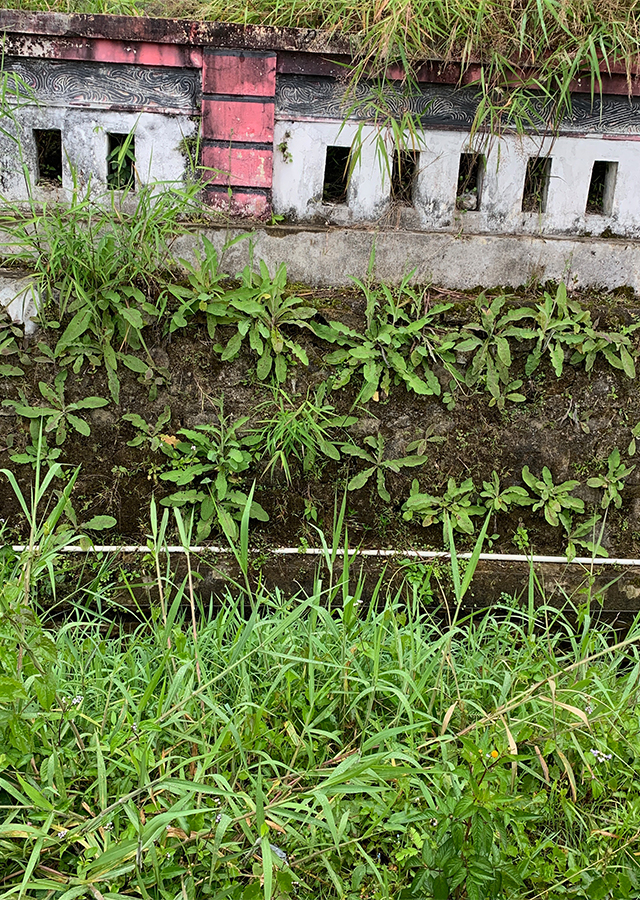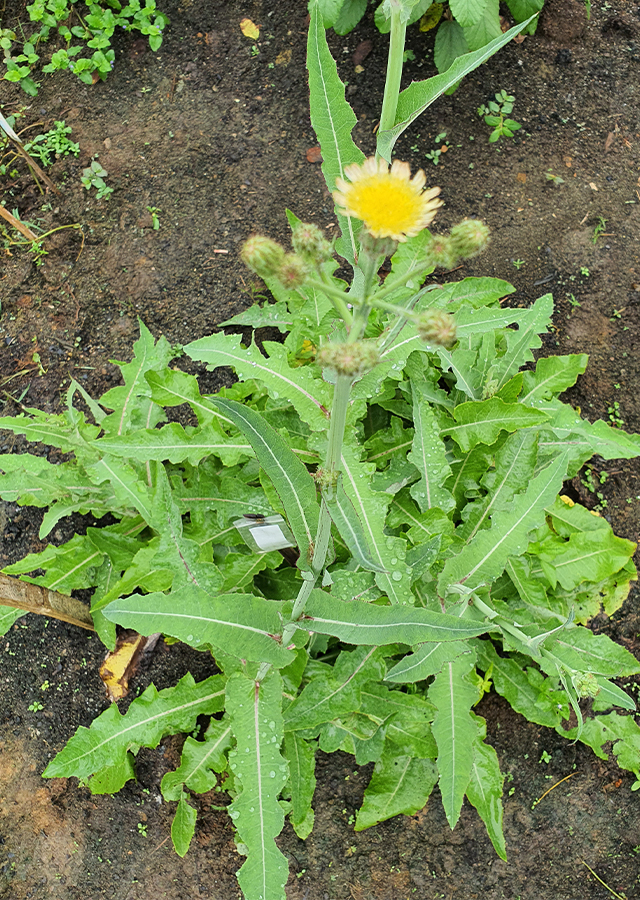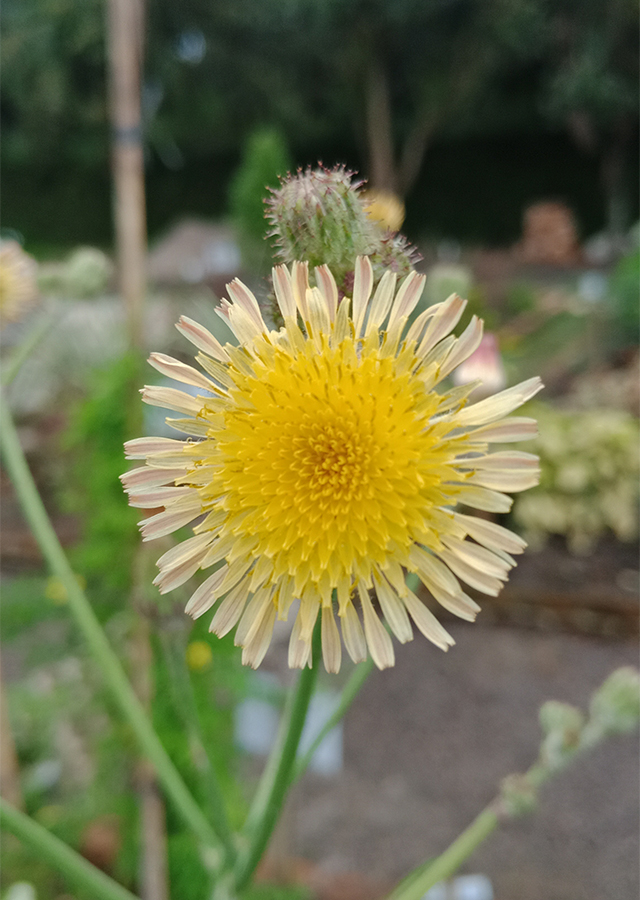Field Milk Thistle; Perennial sowthistle
Sonchus arvensis L.
Asteraceae
Location in our garden
Principal



Synonym
Sonchoseris decora Fourr.
Sonchus pratensis Schur
Sonchus vulgaris Rouy.
Habitus
Herbaceous. An erect, perennial plant that can grow 30-150 cm tall .
Part Used
Leaves
Roots
Twigs
Growing Requirements
Low Temperature
Habitat
Terrestrial
Overview
Field milk thistle is native to Asia and Europe, and can be found growing in North America, South America, Australia, and the Middle East. It is a class of edible wild plant, and has has become naturalised in such areas in 59 countries.
Vernacular Names
She niu tou (Chinese), Laitron des champs (French), Lempung (Malaysia), Crespino dei campi (Italian), Akkermelkdistel (Dutch), Acker- Gaensedistel (German), Tempuyung (Indonesia)
Agroecology
The species is hermaphrodite (has both male and female organs) and is pollinated by bees, flies, Lepidoptera (moths & butterflies), beetles. The plant is self-fertile. Suitable for: light (sandy), medium (loamy), and heavy (clay) soils. Suitable pH: acid, neutral, and basic (alkaline) soils and can grow in saline soils. It can grow in semi-shade (light woodland) or no shade. It prefers moist soil.
Morphology
- Stem - usually branched.
- Leaves - glabrous with dentate margins, weakly spiny, the lower being entire to pinnatipartite with triangular lobes, the upper larger, pinnatipartite to pinnatisect, amplexicaul with rounded, often dentate auricles.
- Flower - flowering shoots are erect, 30-150 cm long. Capitula, often numerous, are terminal and distinctly pedunculated. The glomerules are 4-5 cm in diameter with yellow ligules, which are about as long as the corolla-tube. The involucrel has 35-50 bracts, 14-17 mm in length. These, and the upper parts of the peduncles, have yellow glandular hairs.
- Fruits - dark brown achenes, oblong, 2.4-3.4 mm x 0.8-1.4 mm, flattened, narrowed toward the base, with around 12 longitudinal ridges, crossed by wrinkles. The upper end is truncate with a pappus of white hairs.
Cultivation
Propagation is by seed - sow spring in situ. A common garden weed, this species should not normally need any assistance.
Chemical Constituents
Flavonoids, phenolic, polyphenolic (orientin, rutin, kaempferol, myricetin, hyperuside, catechin, and quercetin).
Traditional Medicinal Uses
- The plant is used to reduce chronic fevers, coughs, phthisis, bronchitis, asthma, and pertussis.
- It is also used for poisoning, swelling, abscesses., and in dissolving kidney stones.
- Roots decoction is used for asthma and cough.
- A poultice of leaves is used for anti-inflammatory activity.
- Fresh ground leaves is applied directly on wounds or leaf juice used as compresses to abscesses.
- In Maharashtra district of India, they were used for body pain, diarrhoea, dysentery, fever, leucorrhoea, leprosy, white spots of the skin, and ringworm.
- A tea made from the roots is used in the treatment of asthma, coughs, and other chest complaints.

